Imagine standing in a swamp with knee-deep mud, rain pouring down and mosquitoes swarming on a hot muggy day in July. You are watching a 500-kV tower — destroyed by a tornado the night before — being hauled away so a temporary structure can be placed into the line and power can be restored. Now imagine it is three months later, the swamp still has knee-deep mud, mosquitoes are still swarming, and it is a bright and sunny humid day. The temporary structure installed in the 500-kV line is being dissembled and replaced with a permanent structure.
In an effort to avoid this scenario, Dominion’s transmission lines group has adopted a strategy of restoration called permanent emergency. For all emergencies, whether minor or major, the restoration practice from 69-kV to 500-kV lines is to use materials, towers and poles in inventory to replace or restore the damaged parts of the line with permanent replacements. Simply put, the motto for emergencies is to “do it once and walk away.”
The Dominion transmission system consists of 6500 miles (10,461 km) of 69-kV, 115-kV, 138-kV, 230-kV and 500-kV lines covering most of Virginia and eastern North Carolina, U.S. Dominion placed the first 500-kV line into service in 1966 and then expanded the system from that line to cover most of its service territory. Because of their age and the demand for more power, most of the original lines have been rebuilt or are in the process of being rebuilt. As of June 2016, more than 5000 500-kV towers make up Dominion’s 500-kV system and 85% of these towers are tangent towers. In terms of operations, there are five major families of towers: 5, 5V, 5-2, F and 93 series.
Structural Background
Developing a functional strategy requires looking at both the design and historical events on the system. Prior to 1999, Dominion did not experience many structural failures on the 500-kV system. These failures were addressed with two temporary, in-house-designed, multidimensional aluminum H-frame structures. These structures were used once or twice in the early 1970s and then set aside. Spare structures consisted of extra towers and parts ordered for a project. They were not inventoried and were dumped on a back lot.
In 1999, an articulated mowing machine knocked a guyed V-tower off its foundation, resulting in a slight buckling of the two legs. The structural engineering group designed a temporary direct-buried guyed H-frame structure composed of an old steel tubular tower. This was later replaced by a lattice self-supporting tower identified from surplus.
In 2001, another guyed tower — located on a mountainside in West Virginia — failed as a result of a broken guy grip, most likely during a wind event. This was ironic because guy grips on towers in the adjacent valley, locally known as Hurricane Alley, had been inspected the previous month to determine whether a guy grip replacement program was needed. Early the next morning, engineers took a helicopter to the remote site, arriving before any construction personnel. The tower had fallen in the transverse direction into the tree line. It was readily apparent the foundation and anchors were intact. If — and that was a big if — a replacement tower was available, the new tower could be erected on the same site.
The only available option was the temporary H-frame previously described. After blasting holes in the rock to direct bury the legs, setting the longitudinal guys and erecting the structure, the line was energized five days later. A permanent self-supporting tower was ordered and installed months later, requiring another seven-day outage. The total cost of the restoration was US$1.1 million, and the restoration required two outages and 12 days.
A meeting was held for management, construction and transmission operations to discuss lessons learned and what could be improved. It was noted the two recent incidents involved the same tower type with no damage to the foundations and anchors. Considering the number and age of this tower type, as well as the time it took to install the temporary structure, Dominion decided to order two spare guyed V-towers.

In an effort to avoid this scenario, Dominion’s transmission lines group has adopted a strategy of restoration called permanent emergency. For all emergencies, whether minor or major, the restoration practice from 69-kV to 500-kV lines is to use materials, towers and poles in inventory to replace or restore the damaged parts of the line with permanent replacements. Simply put, the motto for emergencies is to “do it once and walk away.”
The Dominion transmission system consists of 6500 miles (10,461 km) of 69-kV, 115-kV, 138-kV, 230-kV and 500-kV lines covering most of Virginia and eastern North Carolina, U.S. Dominion placed the first 500-kV line into service in 1966 and then expanded the system from that line to cover most of its service territory. Because of their age and the demand for more power, most of the original lines have been rebuilt or are in the process of being rebuilt. As of June 2016, more than 5000 500-kV towers make up Dominion’s 500-kV system and 85% of these towers are tangent towers. In terms of operations, there are five major families of towers: 5, 5V, 5-2, F and 93 series.
Structural Background
Developing a functional strategy requires looking at both the design and historical events on the system. Prior to 1999, Dominion did not experience many structural failures on the 500-kV system. These failures were addressed with two temporary, in-house-designed, multidimensional aluminum H-frame structures. These structures were used once or twice in the early 1970s and then set aside. Spare structures consisted of extra towers and parts ordered for a project. They were not inventoried and were dumped on a back lot.
In 1999, an articulated mowing machine knocked a guyed V-tower off its foundation, resulting in a slight buckling of the two legs. The structural engineering group designed a temporary direct-buried guyed H-frame structure composed of an old steel tubular tower. This was later replaced by a lattice self-supporting tower identified from surplus.
In 2001, another guyed tower — located on a mountainside in West Virginia — failed as a result of a broken guy grip, most likely during a wind event. This was ironic because guy grips on towers in the adjacent valley, locally known as Hurricane Alley, had been inspected the previous month to determine whether a guy grip replacement program was needed. Early the next morning, engineers took a helicopter to the remote site, arriving before any construction personnel. The tower had fallen in the transverse direction into the tree line. It was readily apparent the foundation and anchors were intact. If — and that was a big if — a replacement tower was available, the new tower could be erected on the same site.
The only available option was the temporary H-frame previously described. After blasting holes in the rock to direct bury the legs, setting the longitudinal guys and erecting the structure, the line was energized five days later. A permanent self-supporting tower was ordered and installed months later, requiring another seven-day outage. The total cost of the restoration was US$1.1 million, and the restoration required two outages and 12 days.
A meeting was held for management, construction and transmission operations to discuss lessons learned and what could be improved. It was noted the two recent incidents involved the same tower type with no damage to the foundations and anchors. Considering the number and age of this tower type, as well as the time it took to install the temporary structure, Dominion decided to order two spare guyed V-towers.











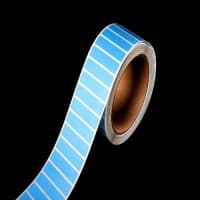
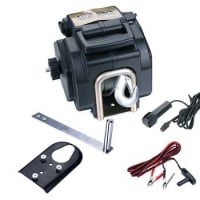

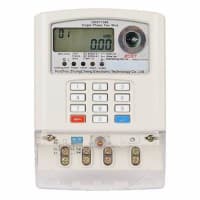

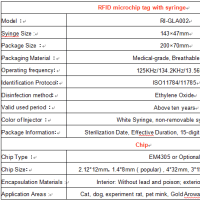

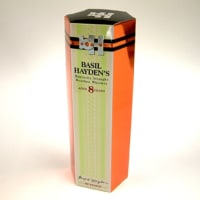

※コメント投稿者のブログIDはブログ作成者のみに通知されます